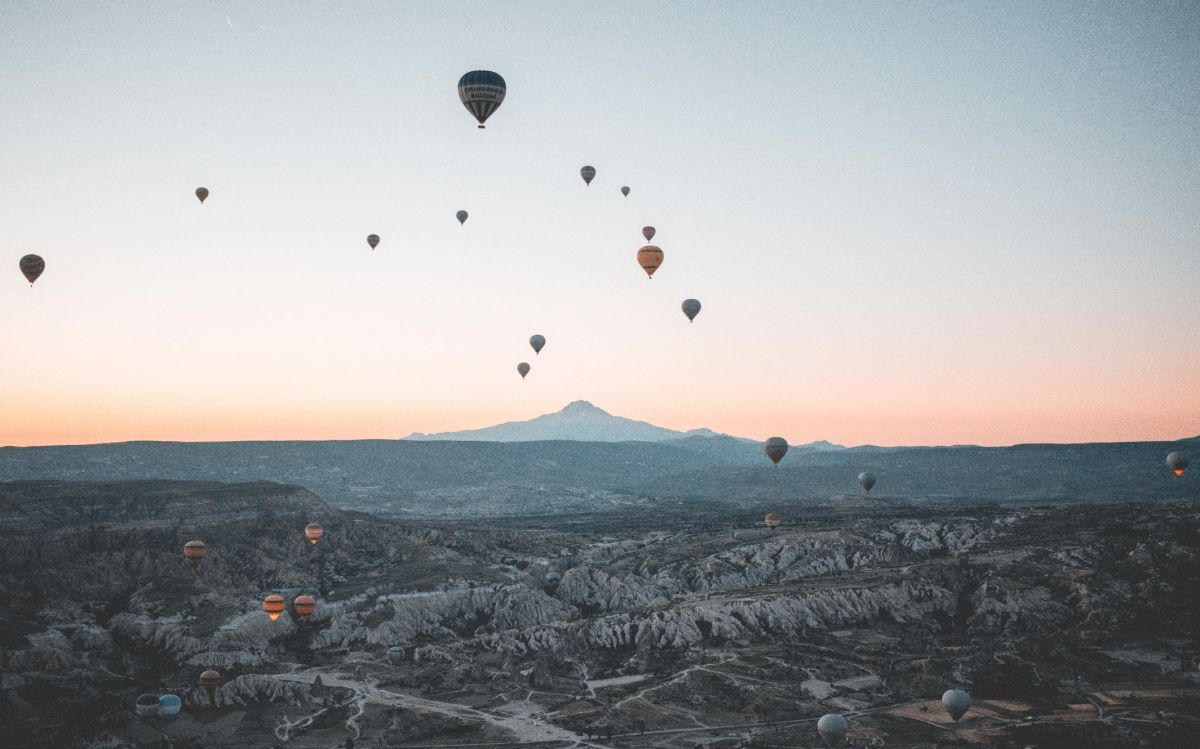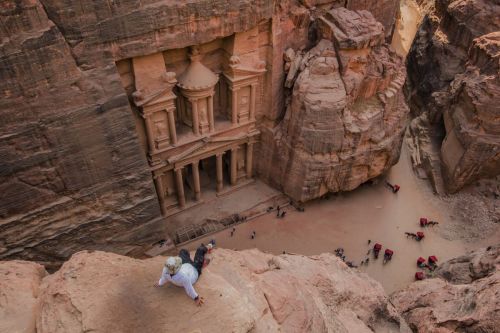It is located in the middle of Anatolia, in the center of Nevşehir district, and in some parts of the Turkish provinces of Nigde, Kirsehir, Aksaray and Kayseri. It covers an area of about 600 square kilometers (according to other sources, about 300 square kilometers) and is 220 kilometers from Ankara.
Anatolia is the historical land of Turkey. It covers the entire peninsula of Asia Minor and its area covers about ⅔ of the total area of Turkey. Turkey is divided into 81 provinces, which are assigned to 7 geographical regions for statistical purposes. The provinces of Nigde, Kirsehir, Aksaray and Kayseri, like most provinces, are named after the cities that are their capitals.
Hot lava covered huge spaces, and ash flew into the air. The lava and volcanic ash settled on the surrounding rocks and formed a soft and easily drifted sedimentary rock - the so-called tuff, which becomes hard when exposed to air.
Due to the action of air, winds and water for hundreds of years, the rocks took bizarre forms in the shape of mushrooms, chimneys, and pyramids, creating a fairy-tale, unreal landscape. Gradually, the people living there adapted them by creating homes, churches, and places to escape persecutors.
The satrapy of Cappadocia covered the area between the Taurus Mountains and the Euphrates River, its main cities being Caesarea and Tyana. The first satrap known by name was Ariaramnes of the Achaemenid dynasty.
Under the Persian king Artaxerxes II, Cappadocia was divided into Paphlagonia and Cappadocia proper. From 301 B.C., when Ariarates II ruled Cappadocia, a separate state began to function on the territory of the former satrapy. During the reign of Roman Emperor Tiberius, Cappadocia was transformed into a Roman province. After the fall of the Persian Empire, the former satrapy of Pont functioned as an independent kingdom.
Anachoreticism, is a form of religiosity known in Christianity, Judaism, Buddhism, Hinduism and Islam.
The Anachorets were hermits living in seclusion, devoting themselves to asceticism and prayer. The most famous hermits of early Christianity are St. Paul of Thebes, St. Anthony the Hermit, St. Ammonas and St. Macarius of Egypt. The Anachoretic movement was particularly popular in early and medieval Christianity and gave rise to the oldest form of monastic life. The Anachorean communities in Cappadocia functioned under the spiritual leadership of St. Basil - the bishop of Caesarea.
The largest underground city - Derinkuyu - consists of several levels reaching 80 meters deep into the ground and could have provided shelter for up to 20,000 people.
Construction of Derinkuyu began in ancient times, probably around the 8th century BC. The builders were most likely Phrygians. After them, the underground residential complex began to be deepened and enlarged by subsequent land inhabitants.
Kitchens, dining rooms, toilets, private quarters and a hall for congregations were built on subsequent levels. Byzantine Christians created numerous chapels and a church there and expanded the city, which eventually had several levels and reached 80 meters into the ground. Construction continued for more than a dozen centuries, until the 12th century. In addition, Derinkuyu was home to wine and oil factories, stables and warehouses for storing food, as well as a cemetery.
The underground city has a ventilation shaft measuring 55 meters, which was also used to supply water. A water pipeline running along it provided water to residents in times of danger, while during peacetime, it served villagers on the surface. In summer, the temperature inside the city stayed at 15 °C (59 °F), while in winter, the air temperature dropped to 7 °C (45 °F).
The city could be accessed through hidden and scattered entrances. In strategically important parts of the city, round stone doors weighing up to 500 kilograms blocked the way of enemies. These boulders could not be pushed back from the outside.
Derinkuyu was connected to other underground cities existing in Cappadocia by many kilometers of tunnels, where archaeologists have found artifacts dating from the 5th to 10th centuries AD.












